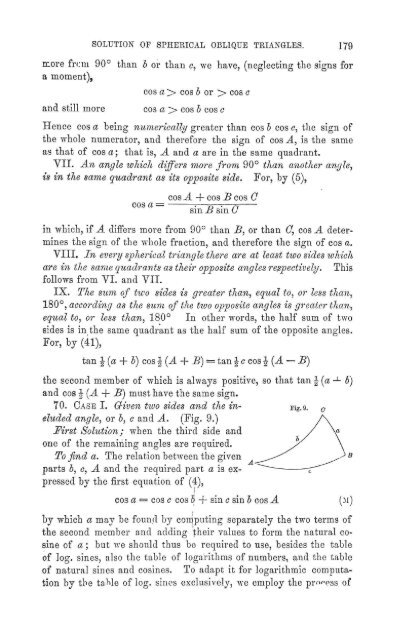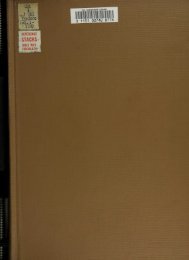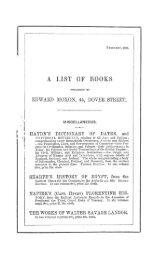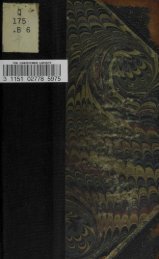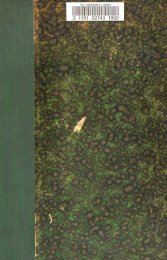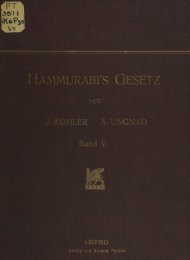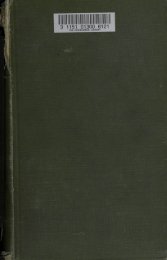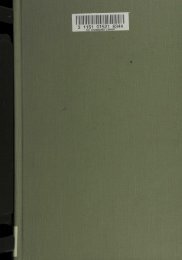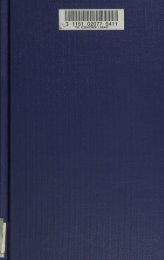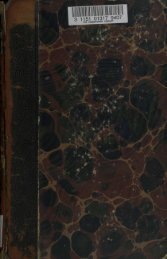You also want an ePaper? Increase the reach of your titles
YUMPU automatically turns print PDFs into web optimized ePapers that Google loves.
SOLUTION OF SPHERICAL OBLIQUE TRIANGLES. 179<br />
more frcm 90° than b or than c, we have, (neglecting the signs for<br />
a moment),<br />
and still more<br />
cos a > cos 5 or >• cos e<br />
cos a > cos J cos e<br />
Hence cos a being numerically greater than cos b cos e, the sign of<br />
the whole numerator, and therefore the sign of cos A, is the same<br />
as that of cos a; that is, A and a are in the same quadrant.<br />
VII. An angle which differs more from 90° than another angle,<br />
is in the same quadrant as its opposite side. For, by (5),<br />
cos a-<br />
cos A -f cos B cos G<br />
sin B sin G<br />
in which, if A difiers more from 90° than B, or than G, cos A determines<br />
the sign of the -whole fraction, and therefore the sign of cos a.<br />
VIIL In every spherical triangle there are at least two sides which<br />
are in the same quadrants as their opposite angles respectively. This<br />
follows from VI. and VII.<br />
IX. The sum of two sides is greater than, equal to, or less than,<br />
180°, according as the sum of the two opposite angles is greater than,<br />
equal to, or less than, 180° In other words, the half sum of two<br />
sides is in the same quadrant as the half sum of the opposite angles.<br />
For, by (41),<br />
tan J (a 4- b) cos J (J. 4- B) = tz.nl c coal {A — B)<br />
the second member of which is always positive, so that tan J (a -"- b)<br />
and cos \[A -\- B) must have the same sign.<br />
70. CASE I. Given tivo sides and the ineluded<br />
angle, or b, c and A. (Fig. 9.)<br />
First Solution; when the third side and<br />
one of the remaining angles are required.<br />
To find a. The relation between the given ^^^^ ^-^ B<br />
parts b, 0, A and the required part a is expressed<br />
by the first equation of (4),<br />
cos a = cos c cos S 4- sin e sin b cos A<br />
by which a may be found by computing separately the two terms of<br />
the second member and adding |;heir values to form the natural cosine<br />
of a ; but we should thus be required to use, besides the table<br />
of log. sines, also the table of logarithms of numbers, and the table<br />
of natural sines and cosines. To adapt it for logarithmic computation<br />
by the table of log. sines exclusively, we employ the prir^ess of<br />
(M)


